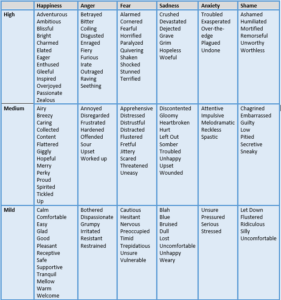
Resilience has not always been part of my vocabulary. For most of my life, I was lucky enough to be spared from trauma, adversity, and hard circumstances– experiences that would have tested my resilience. Then, 85 days ago, things changed. On a typical Tuesday morning, I was driving to work when I looked down to grab my water bottle. I was only two blocks from home when I t-boned a car going 45 miles per hour. I broke three bones in my ankle, banged up both my knees, and the entire ambulance ride to the emergency room I could taste the blood in my mouth from being hit when the airbag deployed. I was in complete shock. I found myself ruminating about what could have happened. I felt lucky I had injuries that would eventually heal, but it was hard to process that I had escaped paralysis, and even death.
Dieter Uchtdorf said, “It’s your reaction to adversity, not adversity itself, that determines how your life’s story will develop.” My car accident became an opportunity to react, to intentionally adapt in ways I may not have previously. I was unsure what resilience really looked like in practice, but Adrienne Maree Brown, author of Emergent Strategy, described the theory and goal of resilience as, “the ability to become strong, healthy, or successful after something bad happens. The ability of something to return to its original shape after it has been pulled, stretched, bent, etc. An ability to recover from or adjust easily to misfortune or change.”
My accident made it obvious to me that I needed to accept that there are things outside of my control. Even though I felt helpless in some ways, accepting this fact helped shift my mindset and gave me the perspective and drive to control what I could.
Three Strategies that Boosted my Resilience
For me, the unfamiliarity of the car accident combined with catastrophizing thoughts left me feeling anything but strong and healthy in the face of misfortune. I experienced an unenjoyable cocktail of anger, regret, guilt, and fear. Engaging with the spiraling thoughts was useless, however, feeling those emotions was necessary and productive.
Identifying my emotions
I began to recognize the emotions I was feeling, allowed myself to feel them in their entirety, and then I got curious. Why am I feeling this emotion? What is the self-talk around my emotion? How can I turn this challenge into an opportunity to practice responding to a trigger?
What can you do to identify your emotions? You might find it hard to understand or even recognize what you are feeling. Many of us were not taught to connect with our feelings directly, so they manifest physically as stomach aches, sweaty palms, or a fast heart rate. The trick is learning to recognize exactly what you are feeling so you are more aware of how you might respond to a person or situation. Although all feelings are valid, not all behaviors are.
See the range of emotions below relative to intensity. Although not an exhaustive list, it can give you a way to start looking at your common emotions. This may help you hone in on exactly what you are feeling so you can manage that feeling when you experience it in the future.

Revisiting my values
Rather than seeing the car accident as a personal failure, I asked myself “what is clear to me now that I experienced this?” The clarity of my values provided my answer–I want to express my love and gratitude within the relationships I value. Previously, I have been guilty of thinking of someone and wanting to reach out, but not following through for whatever reason. I would get distracted and then forget for a couple of weeks. By the time I thought about them again, it felt too late to reach out. Some weeks, filled with work and other stresses, I felt lazy and didn’t want to put in the effort. I now find myself in a more consistent state of gratitude and I am prioritizing the relationships that matter. I have found so much joy in calling and texting friends and loved ones to connect more frequently. In their new book, Resilience that Works: Eight Practices for Work and Life, Marian Ruderman, Cathleen Clerkin, and Katya Fernandez, liken resilience to financial planning. They explain, “steady contributions to your wellbeing can add up like compounding interest over time, resulting in the ability to maintain your course when negative or disruptive events occur.” It might feel like a small thing–to text a friend or send a card in the mail to a family member–but each small thing you do is an investment in that relationship, and in your relationship to resilience.
What do you value? How can your actions reflect your values?
Focusing on my freedoms, rather than my limitations
The most challenging step for me was acceptance. Specifically, the acceptance that I was living with a temporary disability. Me being able to accept that reality was only possible through the support of my community. I was no longer able to be independent and needed to be transparent about my needs, which was not always easy. I did not want to be a burden to those who were already so generous to support me. It takes courage to be vulnerable and ask for assistance when we struggle, but authentic connections make space for compassion and loving-kindness.
During the six weeks off my foot, I had quite a bit of available time on my hands. I redirected the disappointment I felt not being able to be active to pursuing other interests I had not prioritized. I dedicated time to my passion for painting, sewing, and practicing Spanish. I felt accomplished finding pleasure in challenging myself.
Does your energy get tied up focusing on your limitations? How can you shift your focus to opportunities in your life?
Putting Ideas Into Action
Building resilience is not a passive process. It requires intentional thought and action to optimize the opportunity provided by inevitable change or challenges. But by using emotional intelligence, we can be empowered in the process. Understanding our emotions allows us to reevaluate priorities and act on them, choose strength and courage over rumination, and connect authentically with others.
Written by Zari Edlin, TalentSmartEQ Assessment Coordinator